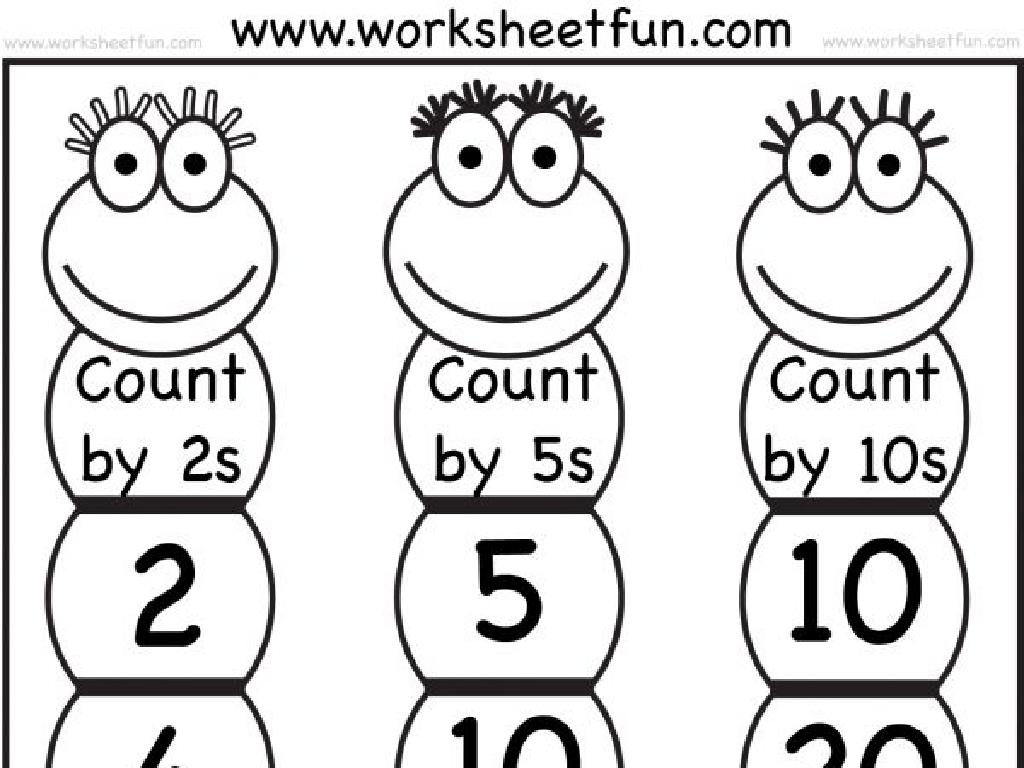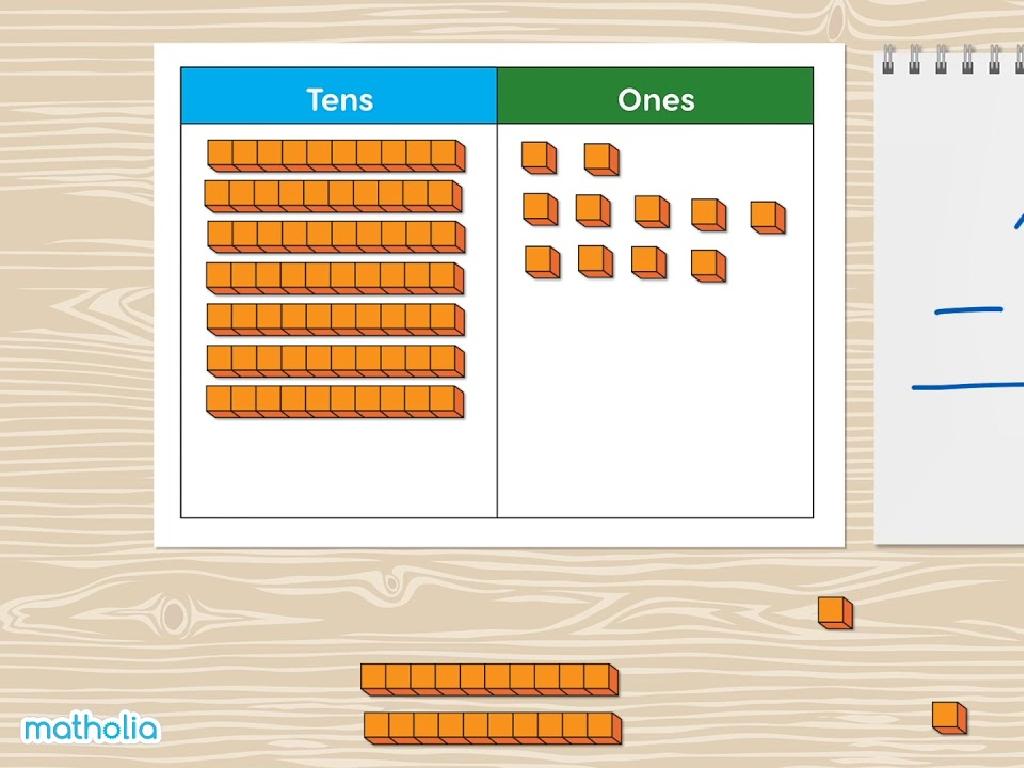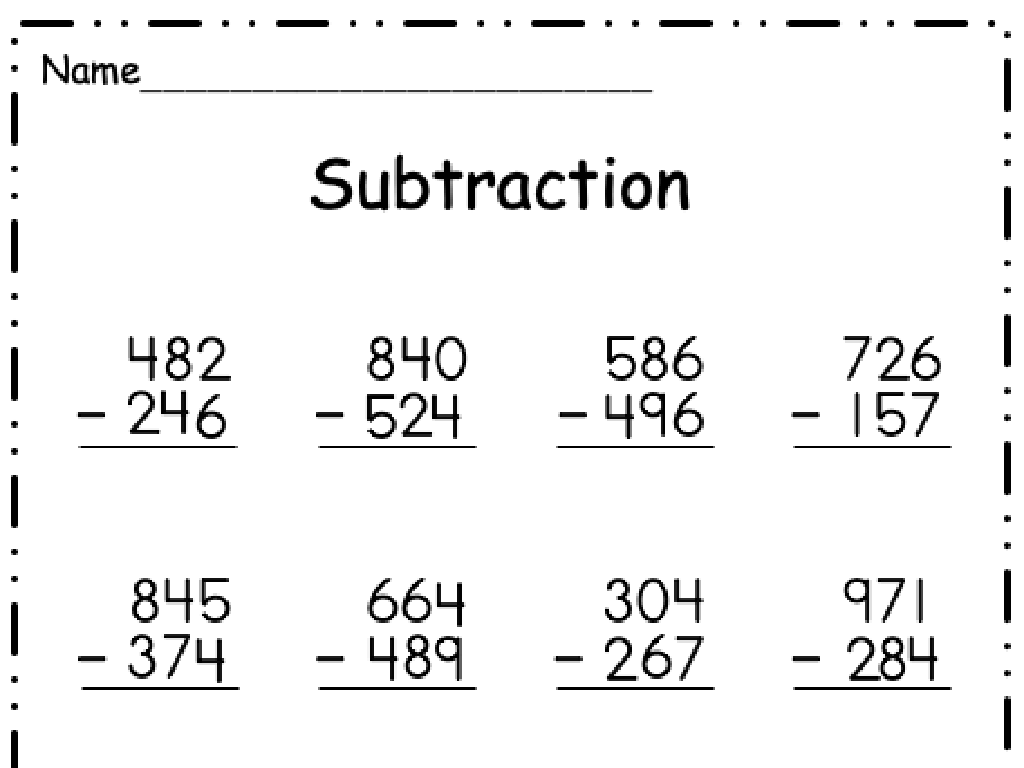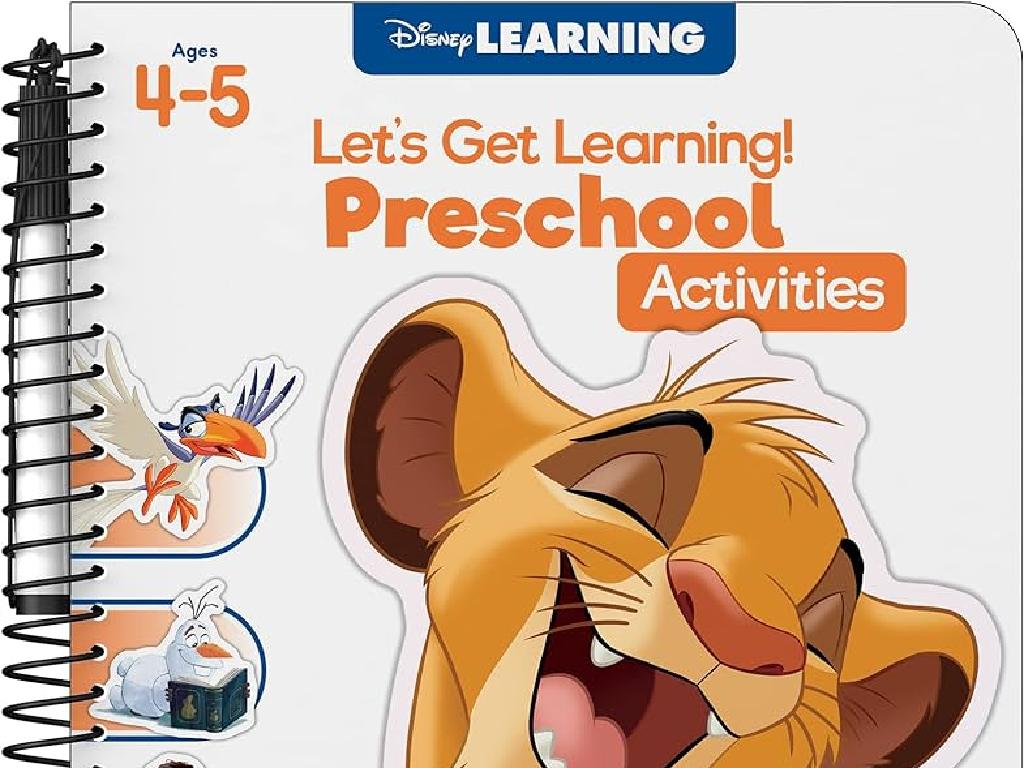Add And Subtract Decimals
Subject: Math
Grade: Fourth grade
Topic: Add And Subtract Decimals
Please LOG IN to download the presentation. Access is available to registered users only.
View More Content
Introduction to Decimals
– What are decimals?
– Decimals represent parts of a whole, like cents in a dollar.
– Place value in decimals
– Each place after the decimal means tenths, hundredths, etc.
– Decimals in daily life
– Money uses decimals: $1.25 means 1 dollar and 25 cents.
– Practice with real examples
|
This slide introduces the concept of decimals to fourth-grade students. Begin by explaining that decimals are a way to express numbers that are not whole, using the example of money to illustrate the concept. Discuss place value by showing how each position after the decimal point represents a fraction of ten (tenths, hundredths, etc.). Use everyday examples such as money to make the concept relatable. Encourage students to think of other examples where they encounter decimals. Conclude by providing some simple addition and subtraction problems involving decimals to apply what they’ve learned.
Adding Decimals
– Align decimal points vertically
– Place decimals directly above each other
– Add numbers step-by-step
– Start adding from the rightmost digit
– Carry over when needed
– Similar to whole numbers, carry the extra value
– Let’s practice together!
– Example: 3.5 + 2.75
|
When adding decimals, it’s crucial for students to align the decimal points to ensure accuracy. Emphasize the importance of organizing their work on paper. Demonstrate step-by-step addition, including how to carry over when the sum of a column is greater than 9, just like with whole numbers. Use the practice problem 3.5 + 2.75 to apply these steps. Have students write down both numbers, align the decimal points, and add each column of digits, carrying over as necessary. The answer should be 6.25. Encourage students to solve it on their own and then review the solution as a class.
Subtracting Decimals
– Align decimals before subtracting
– Place numbers vertically with decimal points lined up
– Borrow when needed
– If a digit is too small to subtract, borrow from the next left digit
– Example: 6.5 – 4.2
– Subtract the bottom number from the top number
– Practice makes perfect!
|
When teaching subtraction of decimals, start by emphasizing the importance of aligning the decimal points. This ensures accuracy in the placement of digits. Borrowing is a technique used when the top digit is smaller than the bottom digit. Work through the example problem 6.5 – 4.2 on the board, showing step-by-step subtraction. Encourage students to practice with similar problems and provide immediate feedback. This will help solidify their understanding of the concept.
Decimal Word Problems
– Apply decimals in real life
– Example: Money calculation
– If you start with $5.50, what happens when you buy something?
– Subtract: $5.50 – $2.75
– Use subtraction to find out how much money is left.
– Find the remaining amount
– Practice calculating change after purchases.
|
This slide introduces students to the practical application of adding and subtracting decimals through word problems, specifically in the context of money. The example provided uses a relatable scenario of buying a toy to illustrate subtraction. Students should understand that when they spend money, they subtract that amount from what they have. The goal is to help them visualize and calculate the remaining amount of money after a purchase. Encourage students to come up with similar scenarios where they either earn (add) or spend (subtract) money to reinforce the concept. This will help them grasp the importance of decimal operations in everyday life.
Class Activity: Decimal Detective
– Find classroom items to price
– Write prices with decimals
– Example: Pencil = $0.50, Eraser = $0.25
– Pair up and calculate totals
– Work together to practice decimal operations
– Add or subtract item prices
– Use addition or subtraction to adjust totals
|
This activity is designed to provide students with a practical application of adding and subtracting decimals. Have the students move around the classroom to find various items that they can assign prices to, ensuring that all prices include decimal values. Encourage them to think creatively about the items’ values. Once they have their prices, they should pair up with a classmate to calculate the total cost of their combined items. This will require them to practice decimal addition or subtraction. As a teacher, circulate the room to assist pairs as needed and to check for understanding. Possible variations of the activity could include setting a budget limit, finding the difference in cost between pairs of items, or offering discounts to calculate.
Review and Practice: Decimals
– Recap today’s decimal lesson
– Let’s remember the steps for adding and subtracting decimals.
– Finish ‘Decimal Operations’ worksheet
– Solve problems on the worksheet to practice.
– Discuss findings with a classmate
– Explain your answers to a friend and listen to theirs.
– Share a new fact you learned
– Tell us one thing that was new for you today.
|
This slide is aimed at reinforcing the day’s learning on adding and subtracting decimals. Begin with a brief review of the key points from the lesson, ensuring that students recall the correct methods for decimal operations. Distribute the ‘Decimal Operations’ worksheet for students to complete, providing a mix of addition and subtraction problems. After completion, students should pair up to discuss their answers and methods, promoting peer learning. Finally, encourage each student to share one new piece of knowledge they gained from today’s lesson, fostering a sense of accomplishment and reinforcing their learning. As a teacher, circulate the room to offer help and ensure that students are correctly explaining concepts to one another.
Conclusion: Mastering Decimals
– Recap adding/subtracting decimals
– Remember to line up the decimal points!
– Importance of decimal accuracy
– Accurate decimals are crucial in math and real life.
– ‘Decimal Whiz’ certificates
– Each student receives a certificate for their hard work.
– Celebrate learning success
|
As we wrap up our lesson on adding and subtracting decimals, it’s important to review the key points. Remind students of the importance of aligning decimal points to ensure accuracy. Discuss why precision matters, not just in math class but in everyday situations like handling money or measuring ingredients. Celebrate the students’ effort and participation by handing out ‘Decimal Whiz’ certificates. This will boost their confidence and acknowledge the skills they’ve developed. Encourage them to continue practicing at home with real-life examples, such as adding up prices while shopping or calculating change.






